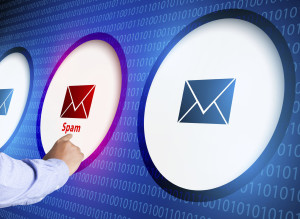
Email is probably the oldest communication technology you’ll use all week. I see you looking at your phone, but cellphones use the same data packet technology as consumer VoIP services like Skype. You probably don’t own a phone - just an internet communication device.
While that doesn’t sound that worrying at first glance, in fact a huge amount of company data does the rounds via email. Unstructured, unprotected and potentially offering ingress to sensitive systems or huge swathes of highly confidential data, it's just sitting there in employees’ email accounts, waiting for someone to move this message to their inbox and click the link.
What can you do to protect your emails?
Implement these ten tips and teach your employees the same.
1. Verify the Sender
Never click a link in an email unless the email is from someone you trust in the organization. Unsure? contact the (alleged) sender and ask directly. Phony emails with dangerous links are the number one way emails are used to spread malware.
2. Don't Click the Attachment
Attachments can be dangerous too. Even if they appear innocuous they can install code on your machine or that attacks your browser. The same rule as with links applies: if you’re not sure, don;t touch it.
3. Don't Click that Link
If you get an email purporting to be from a financial institution, for instance, and it contains a link, don’t follow it. If the email is legit, the same information will be available on the sender’s website so go straight there via your browser. The link may redirect you to a fake website to steal information, money or both.
4. Email Security Starts With IM Security
Be careful who you accept into IM groups. Don't give out personal information on IM and use a nickname for your screen name.
5. Keep Your Email Address for People You Trust
Don’t give out your email address to just anyone. Offer it only to people you trust and whom yo know will be responsible and accountable.
6. Limit Access To Critical Data
The best lock in the world is no use at all if the burglar has a key. Keep the number of ‘keys’ - the number of people who can access sensitive data on their own - to a minimum,and restrict it to C-level if you can.
Create a plan that clearly shows who has access to which data to improve accountability. Make it hard to get all your data at once - even if one person with data access is compromised, create partitions and firewalls so that your data can’t be used by the attackers.
7. Secure Your Wi-Fi
Insecure WiFi spots can be attackers masquerading as the non-tech savvy. An unsecure WiFi spot is also totally open to the outside, so if yours isn’t secure anyone within range can watch you - see what websites you visit, see what you type on them and read your emails over your digital shoulder with nothing more than a laptop. Set strong passwords for access to your company WiFi and maintain network security as the first crucial step to maintain email security.
8. Did I Mention Passwords?
Most people’s passwords are terrible. The top passwords on leaked accounts in 2014 were "123456", "12345678" and "Password". Put a serious password on your email account: it's more secure to have your password to your email written down in your desk drawer than it is to memorize a weak password.
9. Think About Who You're Emailing
You might have great email security, but does the recipient of your email? Would a phone call be safer?
10. Consider Encrypting Emails
Email encryption can be awkward and costly, but it doesn’t have to be. Third party encryption software or a cloud email-as-a-service package that includes encryption and other security measures can actually save a small business a significant amount of money compared with trying to implement complex, multi-layered security solutions in-house.
If you found these 10 email security tips for small businesses and would like to ensure the security of your organizations data, give Stratosphere Networks a call at 877-599-3999 or fill out our contact form.


